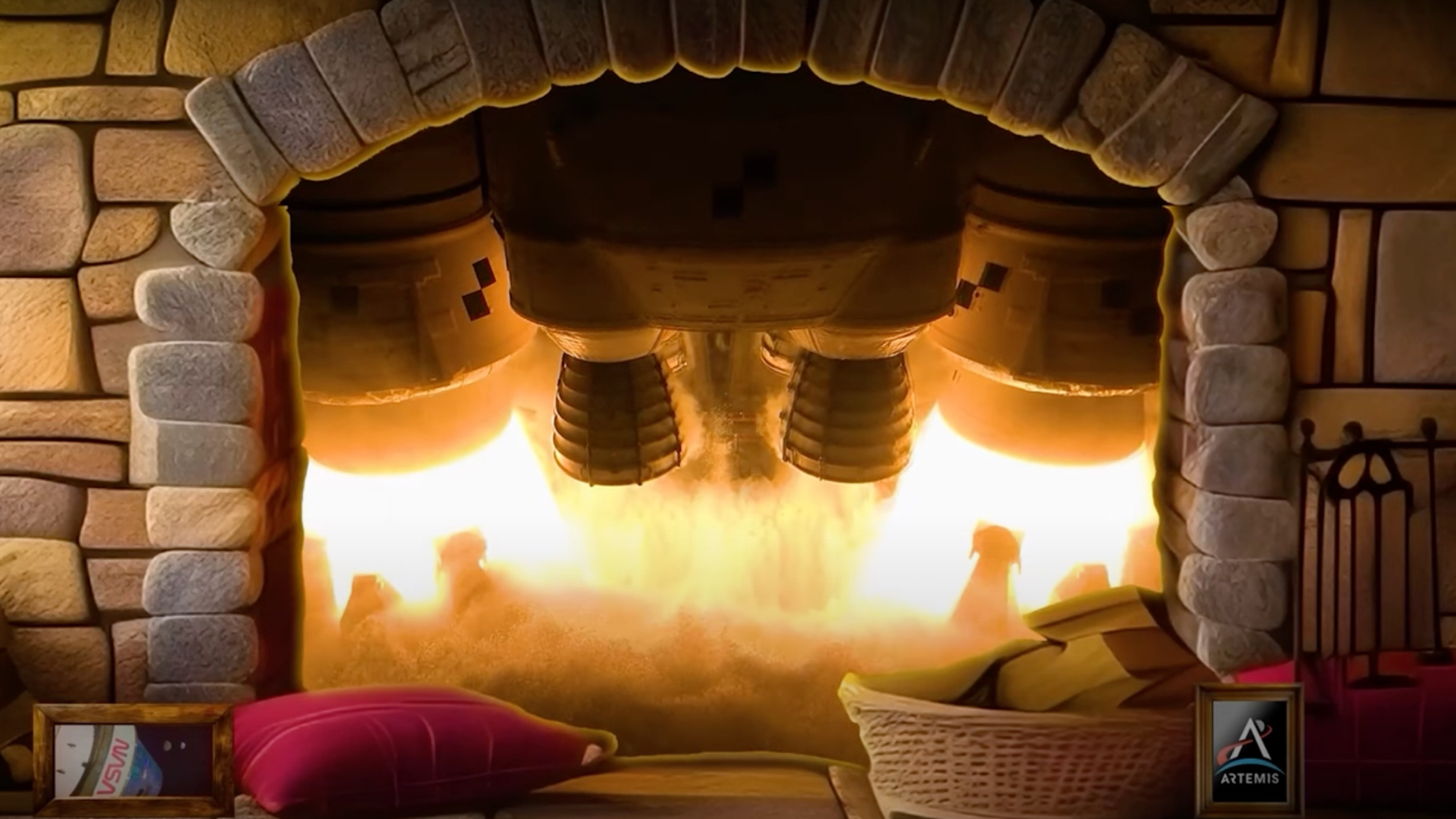
NASA is inviting you to sit by a homey, rocket-powered hearth this holiday season.
The space agency created a virtual fireplace lit by the engines of its huge Space Launch System (SLS) rocket, which sent the uncrewed Artemis 1 mission to the moon in November 2022.
"Just what you need for the holidays — the coziness of a crackling and roaring rocket engine!" NASA wrote in a description of the eight-hour-long fireplace video, which it posted on YouTube on Tuesday (Nov. 26).
"Technically, this fireplace packs the heat of FOUR RS-25 rocket engines and a pair of solid rocket boosters — just enough to get you to the moon! (And get through the holidays with your in-laws.)" the agency wrote.
NASA added a few other touches to the fireplace as well. For example, the hearth sports a framed photo of the Artemis 1 Orion spacecraft in lunar orbit, and another of the logo of the agency's Artemis program.
Related: Space Launch System: NASA's megarocket for Artemis moon missions
The SLS generates 8.8 million pounds of thrust at liftoff, making it the most powerful rocket ever to fly a successful mission. For comparison: NASA's iconic Saturn V moon rocket, which launched the Apollo missions more than half a century ago, produced about 7.5 million pounds of thrust.
But the SLS will lose its crown when SpaceX's Starship megarocket comes online. Starship, which the company is developing to help get people to the moon and Mars, generates about 16.7 million pounds of thrust at liftoff. Starship has launched six times to date, but those have all been test flights.
Artemis 1 remains the SLS' only launch. The giant NASA rocket is slated to fly again in September 2025, sending the crewed Artemis 2 mission around the moon, though it's unclear if the agency will be able to meet that timeline.
SLS and Starship will work together for the first time in late 2026, if all goes according to plan. SLS will launch the crewed Artemis 3 mission toward the moon; the astronauts will then meet up with a Starship in lunar orbit and take the SpaceX vehicle down to the lunar surface. It will be the first crewed moon landing for the U.S. since Apollo 17 in 1972.







